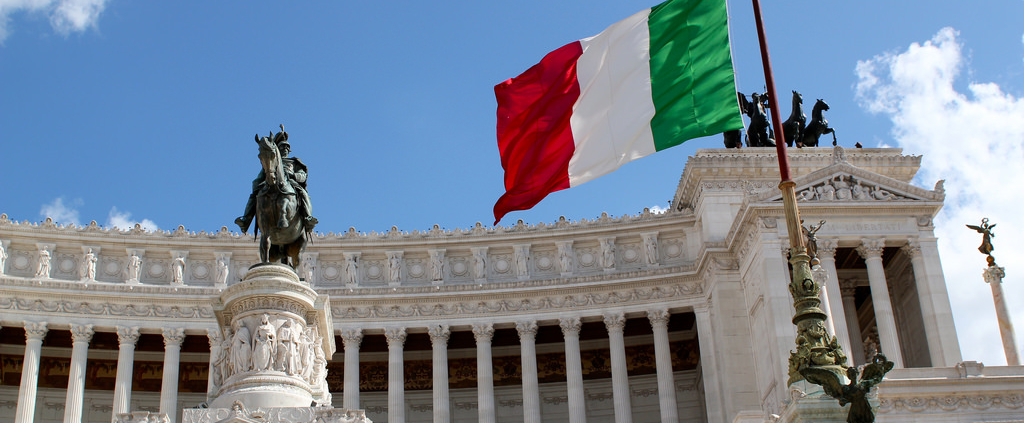Silicon Valley One Year Later, Balloon Bubble, And GoFundYourself
Here’s What You Need To Know
In an end-of-summer edition of TL;DR last year, we wrote that the tech industry was “increasingly vulnerable to activist pressure and government intervention on a range of issues,” listing some of the developing challenges that Big Tech would need to prepare for in the consequential year ahead. With Silicon Valley executives back in Washington, D.C. this week to again testify before Congress, we are revisiting some of our analysis and taking stock of what the policy and regulatory landscape looks like for America’s most-innovative business sector going forward:
- Antitrust Questions Continue To Grow: A growing chorus of investors, experts, and activists have been calling for government antitrust action against Big Tech, which is evidenced by both specific proposals suggesting ways to “break up” particular companies, as well as counter-arguments as to the shortcomings of such proposals. Policymakers on both sides of the aisle appear open to antitrust actions, and the President has used his unmatched bully pulpit to say that Google, Amazon, and Facebook may be in “a very antitrust situation,” while stopping short of calling for antitrust action. Nonetheless, these developments raise the specter that greater regulation of the tech sector may be imminent, whether that is addressed through antitrust legislation or otherwise, which may help explain the industry’s efforts to engage with policymakers on shaping major regulations impacting it, such as those to secure a federal privacy law similar to the European Union’s GDPR.
- Diversity And Economic Disruption Are Still A Challenge: Gender and racial bias challenges persist, as well as a dearth of viewpoint diversity. A focus on diversity and inclusion policies at Silicon Valley firms has yet to meaningfully help recruit and retain talent, and there were threats of regulation earlier this year from the Congressional Black Caucus if the industry did not improve diversity, but it remains to be seen what, if any, steps policymakers may propose to address this issue at this time. Additionally, the consequences of disruption remain, despite positive developments such as traditional retailers adapting to offer consumers experiences and innovations, and e-commerce jobs replacing those in communities where manufacturing has gone away.
- New Pressures From The Political Left: As Amazon’s market cap hit $1 trillion this week, making it the second publicly-traded U.S. company to reach the milestone after Apple, Sen. Bernie Sanders (I-VT) seized the opportunity to introduce the “Stop BEZOS Act” in the Senate, which would require large tech companies that employ low-wage workers to cover the cost of the federal assistance their workers receive – a direct, if highly misleading, attack on their business practices. Further, progressive pressure campaigns to force tech to become arbiters of allowable speech present new risks the industry must navigate. As more tech companies move from disruption to dominance in a growing range of industries (and continue to attract attention on their possible expansion plans), Democratic politicians may feel added pressure to not only create new regulatory frameworks, but to use tech as a punching bag to promote redistributionist policies popular with their far Left base.
- New Suspicions, And Threats, From The Political Right: Although accused of helping Trump get elected by the Left, the Right has become increasingly suspicious that Big Tech is censoring and conspiring against conservatives. In his prepared testimony, Twitter CEO Jack Dorsey – whose platform has been accused of de-emphasizing accounts in search results – said Twitter “does not use political ideology to make any decisions,” and Google and Facebook have faced criticism from President Trump on potential bias as well. The concerns on the Right have culminated in the Sessions’ Justice Department announcing that it will meet this month to determine if social media giants are “intentionally stifling” free speech. However, some experts believe that the President’s allegations of tech bias may actually “inoculate [Big Tech] from regulation,” suggesting that the events over the next several months will be critical to determining the eventual outcomes impacting the industry.
These developments have reinforced our speculation that we have approached an inflection point that will “fundamentally change the relationship between the tech industry, the government, and the public.” Going forward, Silicon Valley will have to continue to adjust to this new landscape – as it has over the past year – in order to strengthen its position with both policymakers and the public as further debates on regulation develop.
News You Can Use
THE COMING BALLOON BUBBLE
Balloons are the latest environmental concern to blow up. Continuing the war on plastic targeting straws and bags, balloons are seen as the next “unnecessary” item environmentalists have in their sights. However, as with straws and plastic bag bans, these policies miss the mark and may ultimately have the opposite effect as intended.
According to a report cited by the balloon industry, balloons made up 1.04% of the total debris collected during a cleanup of U.S. coastline at the beginning of the decade, a percentage that has decreased since. Despite this, the balloon ban is quickly taking flight, serving as a reminder that any industry can find itself under attack and be put on the defensive in this age of heightened activism, regardless of the facts.
“HALF-BAKED” POLICY
The trajectory of marijuana banking has been a not-so-excellent adventure, largely due to the regulatory no man’s land in which federally-regulated financial services institutions and state-legal marijuana businesses find themselves. In its recent decision to close the bank account of Florida agriculture commissioner candidate Nikki Fried because her campaign received donations from “lobbyists from the medical marijuana industry,” Wells Fargo may inadvertently contribute to hastening a policy solution to clarify this ambiguous position.
While banks have closed accounts related to marijuana advocacy groups in the past, Wells Fargo’s action marked the first time a candidate for public office has had an account closed for donations from the cannabis industry, which could affect policymakers who take donations from the industry and raise broader questions about free speech, thereby exacerbating the need for a federal policy solution to clarify today’s half-baked regulatory framework.
GOFUNDYOURSELF
The story of a good deed gone bad recently reminded people of the uncertainties surrounding popular crowdfunding websites. Fast Company reported that Johnny Bobbitt, a homeless man from Philadelphia, was cheated out of $400,000 raised for him on the crowdfunding website GoFundMe. Kate McClure started the campaign after Bobbitt gave her $20 when she ran out of gas, but McClure and her boyfriend used the money raised through the campaign for trips, a new car, and gambling for themselves. After questions surrounding what extent GoFundMe, which collected around $30,000 in fees from the campaign, could legally intervene to honor the intentions of the campaign, a New Jersey judge ruled that all remaining funds must be deposited into a trust for Bobbitt immediately.
Crowdfunding technology can be a force for good, but this example highlights that this technology is still in its early stages and donors need to beware. This episode may draw renewed calls for regulating crowdfunding sites, though in the meantime, it is best to do your due diligence before contributing to make sure the campaign goes toward what it says it does.
CRISES AND POLITICS
When it comes to the media coverage of public health crises related to lead poisoning, it appears that politics may explain the difference in coverage between two instances. In Flint, Michigan, lead in the water attracted national attention and Republican Governor Rick Snyder continues to be flogged in the public arena for something that was the result of lapses at all levels of government, sullying an otherwise productive tenure as the state’s chief executive.
Contrast that with the New York City Housing Authority’s (NYCHA) coverup of broken elevators, rat infestations, and lead poisoning from paint. This summer, Mayor Bill de Blasio quietly revealed there were 820 positive lead tests in children since 2008, a number that has since changed to 1,160. The media’s watchdog role is crucial in bringing public health crises to light and demanding accountability from politicians who have public health crises occur on their watch, yet the bias in coverage proves an instructive lesson in the power of narrative in the public arena, as well as the need to engage early and often with the facts before a crisis hits.








